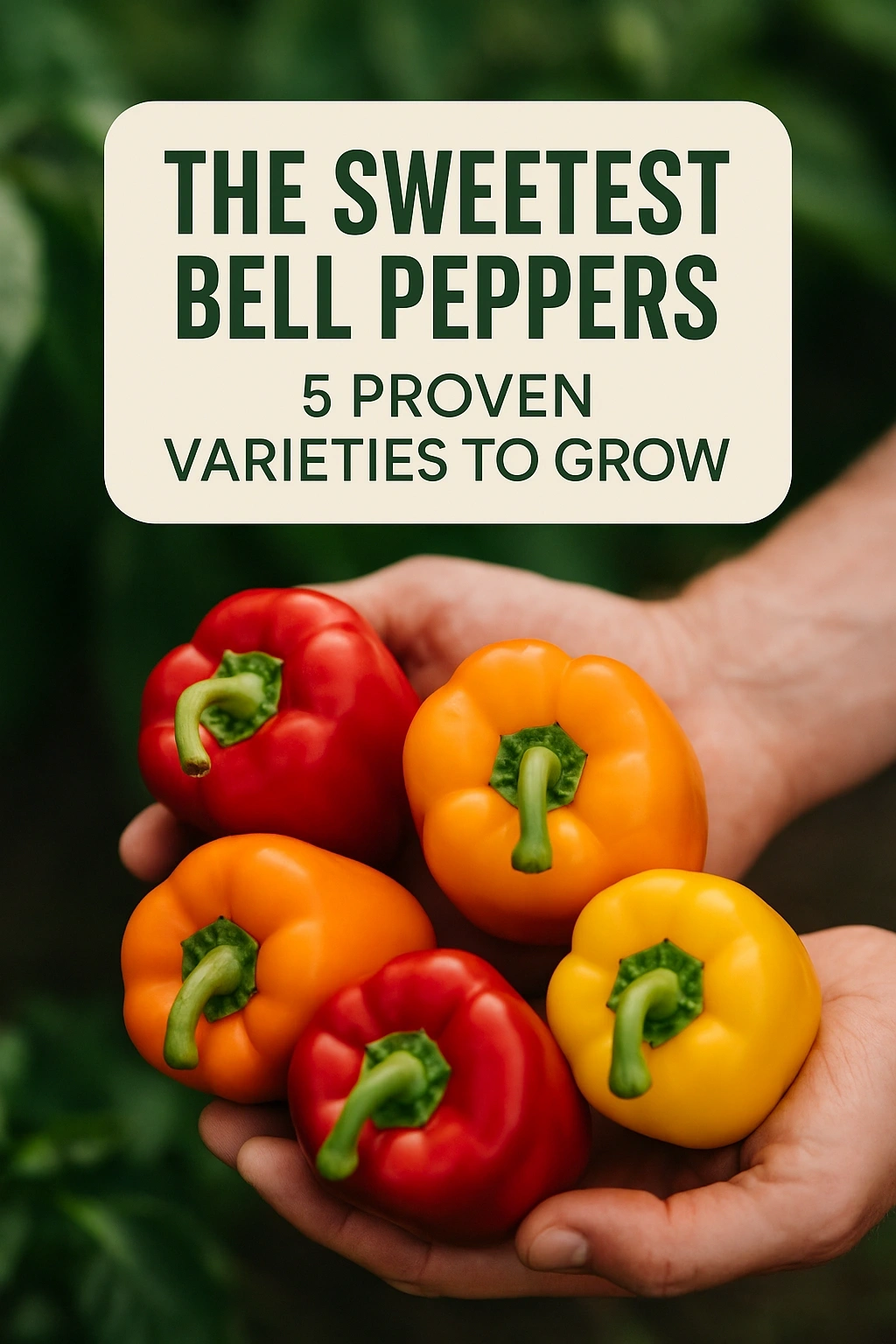
Are you looking to bring a burst of sweetness to your garden? Bell peppers are not only vibrant in color but also bring a delightful flavor to a variety of dishes. In this article, we’ll explore five of the sweetest bell pepper varieties that are proven to thrive in gardens, offering gardeners a chance to cultivate delicious produce with ease. Each variety has unique characteristics that can enhance your culinary creations and garden experience.
Understanding Bell Pepper Sweetness
Bell peppers are known for their crisp texture and sweet flavor, which can vary significantly among different varieties. The sweetness of bell peppers is influenced by their growing conditions, maturity at harvest, and specific genetics. When selecting varieties to grow, it’s crucial to consider not only flavor but also your climate and gardening space.
1. California Wonder
California Wonder is one of the most popular and widely grown bell pepper varieties. Known for its robust flavor and versatility, this variety produces thick-walled fruits that are perfect for stuffing, grilling, or adding to salads. The peppers start off green and mature to a vibrant red, showcasing their sweetness as they ripen.
Growing Tips for California Wonder
- Plant in full sun for optimal growth.
- Provide well-draining soil rich in organic matter.
- Water consistently, allowing the soil to dry slightly between watering.
2. Sweet Chocolate
Sweet Chocolate bell peppers offer a unique twist with their rich, chocolate-brown color. They are exceptionally sweet, with a flavor that intensifies as they ripen. This variety adds a delightful visual and taste profile to your dishes, making them a favorite for gardeners seeking something different.
Growing Tips for Sweet Chocolate
- Start seeds indoors 8-10 weeks before the last frost.
- Transplant outdoors after the danger of frost has passed.
- Consider companion planting with basil to enhance growth.
3. Giant Marconi
The Giant Marconi bell pepper is known for its elongated shape and remarkable sweetness. This variety is often used in Italian cooking and is perfect for roasting due to its size and flavor. The peppers turn from green to a deep red as they mature, offering a deliciously sweet taste that is hard to resist.
Growing Tips for Giant Marconi
- Ensure ample spacing between plants to allow for their size.
- Fertilize with a balanced fertilizer to promote growth.
- Support the plants as they grow taller to prevent breakage.
4. Sweet Banana
Sweet Banana peppers are not only sweet but also slightly tangy, providing a unique flavor that distinguishes them from traditional bell peppers. Their bright yellow color adds a pop of vibrancy to any garden. These peppers are excellent for fresh eating, pickling, or adding to sandwiches.
Growing Tips for Sweet Banana
- Plant in a sunny location with protection from strong winds.
- Monitor for pests, as they can be attracted to the sweet flavor.
- Harvest when the peppers are firm and fully colored for the best taste.
5. Red Knight
Red Knight bell peppers are known for their intense red color and exceptional sweetness. This variety is a favorite among home gardeners due to its high yield and resistance to disease. The fruits are perfect for fresh eating, cooking, or preserving, making them a versatile addition to any garden.
Growing Tips for Red Knight
- Start seeds in nutrient-rich soil to ensure strong seedlings.
- Rotate crops each year to prevent soil-borne diseases.
- Regularly prune the plants to encourage better airflow and fruit production.
Frequently Asked Questions
What is the best time to plant bell peppers?
The best time to plant bell peppers is after the last frost date in your area. They thrive in warm weather, so it’s essential to wait until the soil temperature is consistently above 70°F (21°C) for optimal growth.
How can I tell when my bell peppers are ripe?
Bell peppers are typically ready to harvest when they are firm and have reached their full size, which varies by variety. For the sweetest flavor, allow them to ripen fully on the plant until they change color, usually to red, yellow, or orange, depending on the variety.
Can bell peppers be grown in containers?
Yes, bell peppers can be successfully grown in containers. Choose a minimum 5-gallon pot with drainage holes and use a high-quality potting mix. Ensure the container receives plenty of sunlight for healthy growth.
How often should I water bell peppers?
Water bell peppers consistently, aiming for about 1-2 inches of water per week. It’s best to water deeply and less frequently to encourage strong root development while avoiding waterlogged soil.
What pests should I watch for when growing bell peppers?
Common pests that may affect bell peppers include aphids, spider mites, and whiteflies. Regularly inspect your plants for signs of pests and use organic remedies or insecticidal soaps as needed to manage infestations.
